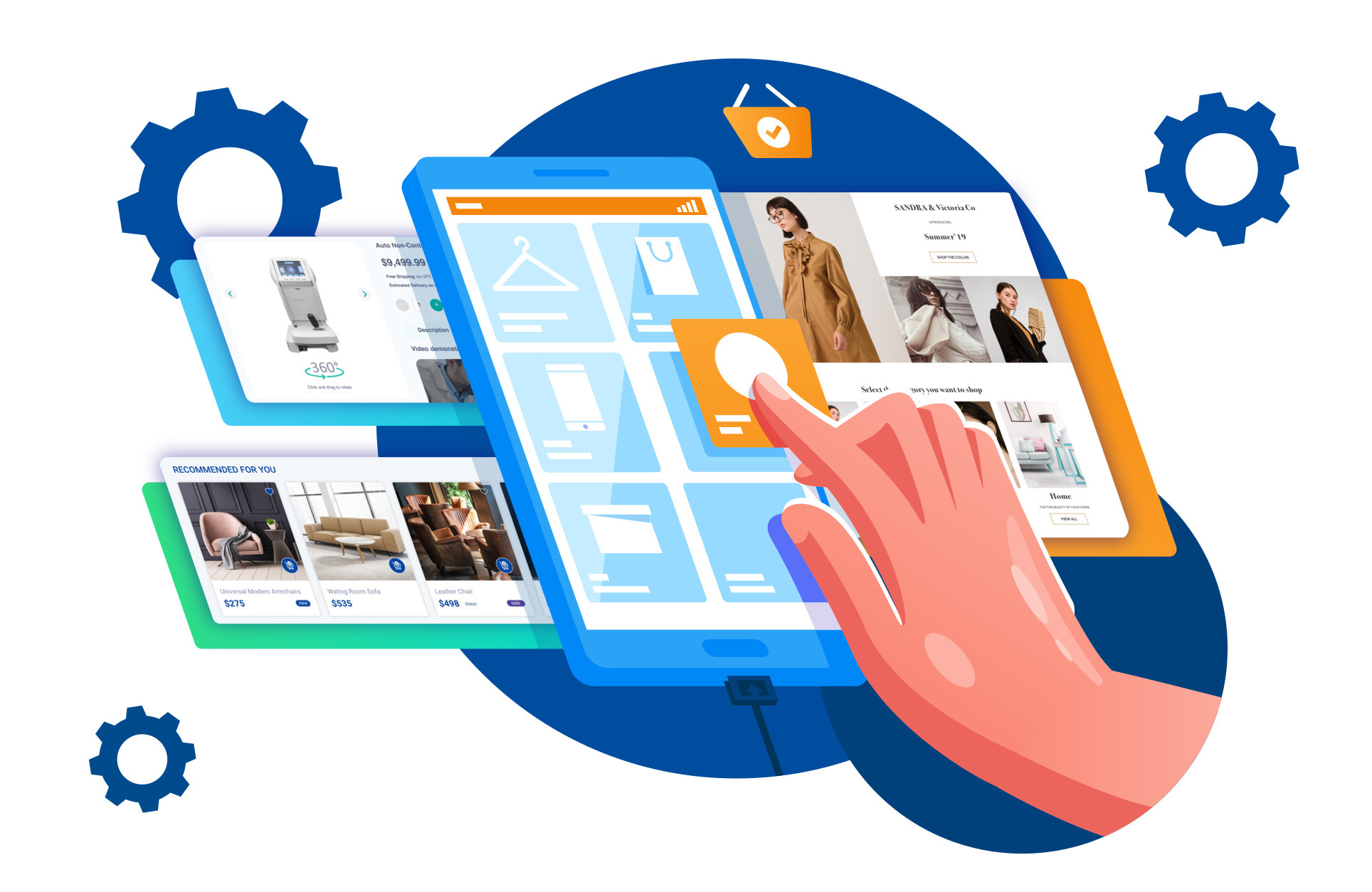In the fast-paced world of e-commerce, standing out and growing your online store into a thriving business requires strategic planning, innovative marketing, and a customer-centric approach. At Premad Software Solutions, we understand the intricacies of building and scaling successful e-commerce platforms. From optimizing SEO and leveraging social media marketing to improving user experience and offering excellent customer service, these strategies will help you attract and retain customers. Discover how data analysis, mobile optimization, and influencer partnerships can transform your e-commerce venture into a thriving enterprise.
How can I effectively drive traffic to my e-commerce website?
To effectively drive traffic to your e-commerce website, you should implement a multifaceted approach. Start with search engine optimization (SEO) to improve your site’s visibility on search engines. This involves using relevant keywords, optimizing meta tags, and creating high-quality useful content. Invest in pay-per-click (PPC) advertising through platforms like Google Ads and social media ads to target specific demographics. Social media marketing is also important; create engaging content and leverage influencers to reach a broader audience. Additionally, consider email marketing to nurture relationships with existing customers and attract new ones through newsletters and promotional offers. Collaborate with other same category businesses for cross-promotions and guest blog on reputable sites to drive referral traffic. Regularly analyze your traffic data using tools like Google Analytics to identify what works best and adjust your strategies accordingly.
How can content marketing help in growing an ecommerce business?
Content marketing is a powerful tool for growing an e-commerce business as it helps build brand authority, drive organic traffic, and engage customers. Start by creating high-quality, valuable content that addresses the needs and interests of your targeted audience. This can include blog posts, how-to guides, product reviews, and videos. By incorporating relevant keywords, you can improve your search engine rankings and attract more users and visitors. Share your content across social media and other platforms to increase reach and drive traffic to your site. Email marketing can also be enhanced with informative and engaging content, helping to nurture leads and convert them into customers. Additionally, content marketing builds trust and credibility, encouraging repeat business and customer loyalty. Regularly updating your content keeps your audience engaged and coming back for more, ultimately contributing to the growth and success of your e-commerce business.
Here are given the best 7 strategies to help you elevate your e-commerce website and achieve sustainable growth.
1. Optimize Your Site for User-Experience (UX)
User-experience (UX) is the cornerstone of a successful e-commerce website. A seamless, intuitive, and enjoyable shopping experience can significantly boost customer satisfaction & conversions. Focus on the following aspects to optimize UX:
- Responsive Design: Ensure your website is 100% mobile-friendly, as a large portion of online shoppers use their smartphones and tablets.
- Fast Loading Speed: Improve page load times to reduce bounce rates and keep users engaged.
- Easy Navigation: Simplify your website’s navigation to help users find products quickly and easily.
- High-Quality Images and Descriptions: Use high-resolution images and detailed, informative product descriptions to provide a clear understanding of your offerings.
2. Implement Robust SEO Strategies
Search engine optimization, or SEO, is very important for bringing visitors and users to your online store. By making your website easy for search engines to find, you can reach more people who are looking for the things you sell. Some important SEO strategies are:-
- Keyword Research: Identify and incorporate relevant keywords into your product titles, descriptions, and blog content.
- On-Page SEO: Optimize meta tags, headers, and URLs to improve your site’s search engine rankings.
- Content Marketing: Regularly publish high-quality blog posts, guides, and tutorials that provide value to your audience and improve your site’s authority.
- Link Building: Acquire backlinks from reputable websites to enhance your domain authority and search engine rankings.
Also Read :- How to Optimize Your Website for Speed and Performance
3. Leverage Social Media Marketing
Social media is the best online way to promote your online store and reach more people. Make a plan for how you’ll use social media to build your brand and get people to your website. Here are given some of the best ideas:-
- Platform Selection: Focus on the social media platforms where your target audience is most active, such as Facebook, Instagram, Twitter, and Pinterest.
- Consistent Posting: Maintain a regular posting schedule to keep your audience engaged and informed about new products, promotions, and company updates.
- User-Generated Content: Encourage customers to share their experiences with your products on social media and feature their content on your profiles.
- Influencer Collaborations: Partner with influencers in your niche to reach a broader audience and build credibility.
4. Offer Exceptional Customer Service
Providing outstanding customer service is essential for building trust and loyalty with your customers. Great customer service can bring back customers, get good reviews, and have people tell their friends about you. To improve customer service, try these things:
- Multiple Support Channels: Offer various support options, such as live chat, email, and phone support, to cater to different customer preferences.
- Quick Response Times: Respond to customer inquiries promptly to show that you value their time and business.
- Personalized Assistance: Use customer data to provide personalized recommendations and support.
- Flexible Return Policies: Implement hassle-free return policies to give customers confidence in their purchases.
5. Utilize Email Marketing
Email marketing is still a great way to reach customers and sell things. By making a list of email addresses and taking care of it, you can send messages that make people want to buy again and feel good about your business. Some good email marketing ideas include:
- Welcome Series: When someone new signs up, send them a few welcome emails. Tell them about your brand and what you sell in these emails.
- Segmentation: Segment your email list based on what your customers do, what they like, and what they’ve bought. This way, you can send them content that’s just right for them.
- Promotional Campaigns: Run email campaigns for special promotions, discounts, and new product launches to boost sales.
- Abandoned Cart Emails: Send reminder emails to customers who have left items in their cart to encourage them to complete their purchase.
6. Invest in Paid Advertising
Paid advertising can significantly increase your ecommerce website’s visibility and attract targeted traffic. Utilize various types of advertising platforms to reach potential customers and drive conversions. Key advertising channels include:
- Google Ads: Use Google Ads to display your products in search results and on relevant websites.
- Social Media Ads: Create targeted ads on platforms like Facebook, Instagram, and Pinterest to reach specific demographics.
- Retargeting Campaigns: Implement retargeting ads to re-engage visitors who have previously visited your site but did not make a purchase.
Also Read :- Top 10 Important Elements You Must Include in a User-Friendly Website
7. Analyze and Optimize Performance
Regularly analyzing your e-commerce website’s performance is essential for identifying areas of improvement and implementing effective strategies. Use analytics tools to monitor key metrics and make data-driven decisions. Focus on the following:
- Traffic Sources: Find out which ways people are using to visit your website the most.
- Conversion Rates: Track conversion rates to understand how well your website is turning visitors into customers.
- Customer Behavior: Analyze customer behavior on your site to identify any obstacles in the purchase process.
- A/B Testing: Conduct A/B tests on various elements of your website, such as product pages, checkout processes, and marketing campaigns, to determine what works best.
Conclusion
Growing your e-commerce website into a thriving business requires a multifaceted approach that prioritizes user-experience, effective marketing, and continuous optimization. By implementing these 7 strategies, you can enhance your online presence, attract more customers, and drive sustainable growth for your e-commerce business. At Premad Software Solutions, Being a well-trusted website development company in jaipur, we are dedicated to helping you achieve e-commerce success through innovative web development services and strategic support. Contact us today to learn how we can help you elevate your e-commerce platform.



